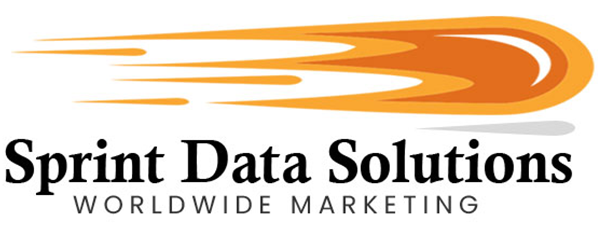Insurance Becomes More Important In Times Of Volatility
The concept of insurance has long served as a cornerstone of financial security, perfectly encapsulated by the adage, “It’s better to have it and not need it than to need it and not have it.” Life is inherently unpredictable—accidents, natural disasters, illness, or liability claims can strike without warning and often come with staggering financial consequences. In such moments, individuals or businesses that lack the necessary resources to recover on their own can face devastating setbacks. Insurance acts as a safety net, offering critical financial support in exchange for regular, manageable payments known as premiums. Over time, those seemingly small monthly contributions build into a reserve of protection, enabling policyholders to cover medical bills, repair costs, legal fees, or lost income when disaster hits.
More than just a wise financial choice, insurance is legally required in many circumstances. For instance, nearly every state in the U.S. mandates some form of vehicle insurance as a prerequisite for lawful driving. Homeowners in mortgage agreements are often required to have property insurance, and employers must carry workers’ compensation policies. These requirements exist not only to protect the individual but also to safeguard public interests and economic stability. Yet, despite its importance, many people treat insurance as a financial afterthought—something akin to eating vegetables. They understand it’s beneficial, even necessary, but often engage with it passively, rarely examining the fine print or reassessing their coverage as life circumstances evolve.
This passive relationship creates a unique opportunity for education and engagement through strategic marketing. Clear, informative promotion of insurance services can demystify complex terms, illuminate the often-overlooked differences between policies, and highlight gaps in current coverage. For both consumers and business decision-makers, this kind of transparent messaging can be a wake-up call. Whether it’s revealing hidden exclusions in existing policies, showcasing more comprehensive alternatives, or simply reinforcing the peace of mind that good coverage brings, well-crafted marketing can inspire action. In an industry where trust and clarity are paramount, effective communication doesn’t just drive sales—it empowers better financial decisions and fosters long-term security.

Who Benefits?
There is a wide array of insurance products available to meet the diverse needs of both individual consumers and businesses across the United States. Targeted insurance offerings can be strategically tailored to resonate with specific demographics and industries. For example, homeowners and renters insurance can be customized by region based on weather-related risks, while businesses may benefit from sector-specific policies such as cyber liability for tech firms or professional indemnity for legal and consulting practices. Additionally, underserved communities, emerging startups, and niche professions present unique opportunities for insurers to fill market gaps and provide value through personalized coverage and flexible policy structures. By understanding these nuanced needs, insurance providers can significantly enhance their reach and relevance in today’s competitive landscape.
Health Insurance
Health insurance remains one of the most pressing and emotionally charged concerns for millions of Americans. Despite being a global leader in medical innovation and technological advancement, the United States also grapples with some of the highest healthcare costs in the world. While state-of-the-art treatments and life-saving procedures are available, they often come with staggering price tags. For individuals without employer-sponsored health plans—particularly freelancers, part-time workers, and those in the gig economy—the financial burden of healthcare can be devastating. A single serious illness or accident has the potential to plunge a family into long-term debt, erode savings, or even result in bankruptcy. In some cases, people may have to forgo critical treatment altogether due to a lack of affordable options.
This reality drives an ongoing demand for more affordable and practical health insurance solutions. Although the Affordable Care Act (ACA) has made significant strides in expanding access to health insurance through subsidies and marketplace options, many still find the available plans lacking in coverage or overly expensive. Gaps in coverage, high deductibles, and limited provider networks continue to leave people searching for alternatives. As healthcare costs continue to rise and the system grows more complex, any individual or organization that can introduce accessible, transparent, and cost-effective insurance options is bound to capture attention. In today’s uncertain economic climate, the search for better, more equitable health insurance isn’t just a preference—it’s a necessity.
Medicare Part B
As a vital complement to traditional health insurance, Medicare Part B plays a critical role in the broader healthcare financing landscape—particularly for aging Americans. While public focus often gravitates toward “big-ticket” medical events such as heart surgery, joint replacements, or aggressive treatments like chemotherapy and radiation for cancer, Medicare Part B addresses a wide spectrum of essential, ongoing healthcare needs that can cumulatively become financially burdensome. These include routine doctor visits, diagnostic services, outpatient care, preventative screenings, durable medical equipment like wheelchairs and oxygen tanks, and even coverage for ambulance transportation. Notably, it also extends to important mental health services, such as therapy and psychiatric evaluations, which are often overlooked in general insurance coverage but remain vital to holistic well-being.
Because it supports everyday healthcare interactions and essential non-hospital services, Medicare Part B often becomes a top priority for consumers—sometimes even surpassing traditional health insurance in perceived importance. Individuals nearing retirement or managing chronic conditions are especially attentive to the scope and limitations of their Part B benefits. As such, well-crafted marketing strategies that address these specific concerns and highlight the comprehensive support offered through Medicare Part B can see significantly higher engagement. Targeting the right audience—particularly seniors, caregivers, and those newly eligible for Medicare—can yield strong interest, making Medicare Part B not just a necessary coverage, but also a strategic opportunity for insurers and healthcare marketers alike.
Life Insurance
As a key complement to health insurance, Medicare Part B plays a crucial role in financing healthcare, especially for older Americans. While much public attention often focuses on the “big-ticket” healthcare expenses—such as major surgeries, cancer treatments, or organ transplants—Medicare Part B addresses a wide array of essential yet less dramatic needs. This includes doctor visits, outpatient care, medical supplies, and preventive services. For many, this coverage becomes a central concern upon nearing retirement age, as the costs associated with even routine care can quickly accumulate without proper insurance. Understanding the details of Medicare Part B—what it covers, what it doesn’t, and how it integrates with other forms of insurance—is vital for making informed financial and health decisions.
Variable Annuity Holders
Variable annuities, while not purely insurance products, are specialized financial instruments typically offered by insurance companies that combine features of both investment and insurance. These products require either a one-time, substantial payment or a series of predetermined, smaller contributions. In return, they provide the policyholder—or their chosen beneficiaries such as a spouse or children—with access to tax-deferred funds at a future date, often aligned with retirement goals. The investment component of variable annuities allows policyholders to allocate funds among various sub-accounts, which are similar to mutual funds, offering the potential for growth based on market performance.
What sets variable annuities apart is their dual benefit: not only do they support long-term investment with tax advantages, but they also include insurance-like features such as death benefits and guaranteed lifetime income options. This makes them particularly appealing to individuals looking for a blend of growth potential and financial security in their retirement planning. As a result, these products attract a diverse demographic, especially those approaching retirement age or seeking reliable income streams post-retirement. Their appeal lies in the flexibility they offer—customizable investment strategies, optional riders for enhanced protection, and the ability to tailor income disbursement schedules to personal needs.
Auto Insurance
While auto insurance is generally a legal requirement for driving, not all policies offer the same value, coverage, or flexibility. The auto insurance market is vast, with options that range significantly in terms of price, protection levels, deductibles, and customer service standards. Many policyholders, lured by brand recognition or multi-policy discounts from larger insurers, end up with plans that may be convenient but are not necessarily tailored to their specific driving habits or financial circumstances. As a result, they may overpay for coverage they don’t need or remain underinsured in critical areas. This gap in consumer understanding and satisfaction creates substantial opportunities for innovative insurance providers to enter the market with competitive pricing, transparent terms, and features like usage-based premiums, accident forgiveness, and responsive claims support. Such offerings can resonate deeply with consumers who are unaware that more personalized and cost-effective alternatives exist, potentially reshaping customer expectations and loyalty within the industry.
Home Insurance
While home insurance isn’t mandated by state or federal law the way auto insurance often is, it effectively becomes a requirement for many homebuyers. This is because mortgage lenders typically insist that borrowers secure adequate home insurance coverage as a condition of loan approval. Without this protection, banks risk financial loss in the event of property damage. As a result, although there’s no legal obligation, the practical reality is that most homeowners cannot finalize a purchase without it.
Home insurance, much like auto insurance, is a mature and highly diversified market, offering a wide range of policy options tailored to different needs. However, in practice, many homeowners opt for more basic coverage—often as part of a bundled package with auto or life insurance—because these options are easier to select and often come with attractive discounts. Despite this, more comprehensive and competitively priced policies exist that offer better value and broader protection. When consumers are well-informed about the advantages of switching—such as improved coverage limits, better customer service, or lower deductibles—they’re often willing to move to providers offering more robust solutions.
Renter Insurance
In recent years, insurance providers have increasingly recognized that coverage should extend beyond traditional property ownership. With a significant portion of the population—particularly in urban centers like New York City—opting to rent long-term, often in rent-controlled or stabilized apartments, the need for tailored insurance solutions for renters has become more apparent. Renters face a range of risks, from theft and fire damage to liability for accidents that occur within their rented spaces. Despite not owning the physical property, renters have personal belongings, responsibilities, and liabilities that deserve protection.
The growing trend of long-term renting, fueled by rising housing costs, stagnant wages, and a preference for flexibility, has expanded the market for renters insurance. This shift has created a unique opportunity for insurers to develop policies that cater specifically to the needs of tenants. With thoughtful marketing strategies and clear educational campaigns, renters can become more aware of the benefits of securing insurance—such as coverage for personal possessions, temporary housing after a covered loss, and liability protection. As more people prioritize financial stability and risk mitigation, renters insurance is quickly gaining traction as a smart, affordable investment in personal security.
Vault Insurance
Placing valuables and irreplaceable items in a vault is often seen as the ultimate safeguard—a means to achieve maximum protection and peace of mind. However, reality can defy expectations. Vaults, though secure, are not invulnerable to unforeseen threats such as natural disasters, fire, or sophisticated theft. In such cases, the supposed security can quickly dissolve, leaving owners devastated and without recourse, despite the significant cost of vault storage. This is precisely why vault insurance plays a critical role. It serves as an essential layer of financial and emotional protection, ensuring that even in the worst-case scenario, the value of what’s lost is not entirely gone. For individuals who already invest in vaults to shield their assets, the case for insurance becomes even stronger—it’s a logical extension of their commitment to security. With a thoughtful and trust-building marketing strategy, these individuals can be shown that vault insurance isn’t just an added cost, but a vital component of true, comprehensive protection.
Commercial Business Insurance
One of the earliest forms of insurance ever developed was created to safeguard commercial ventures, particularly the transportation of valuable goods across oceans and continents. This legacy underscores the enduring significance of commercial business insurance in today’s global economy. Modern commercial insurance is more intricate and specialized than ever before, covering a wide spectrum of needs including property damage, liability protection, cyber threats, equipment breakdowns, employee-related risks, and business interruption losses.
Savvy entrepreneurs and corporate leaders understand that protecting their business means safeguarding every critical component—from physical infrastructure and inventory to digital assets and personnel. As businesses grow more complex, the demand for tailored insurance solutions that address specific industry risks continues to rise. Consequently, there is a robust and ever-evolving market for commercial insurance products that not only provide comprehensive coverage but also offer competitive pricing and adaptability to shifting regulatory and operational landscapes. For any forward-thinking business, securing the right insurance isn’t just a precaution—it’s a strategic investment in long-term stability and success.
Personal Property Insurance
Many individuals mistakenly assume that having home insurance means everything they own is fully protected. In reality, especially when premiums are low, most standard home insurance policies primarily cover the physical structure of the house itself, offering little to no protection for the personal belongings within. Items such as electronics, high-end furniture, appliances, jewelry, collectibles, or even sentimental family heirlooms may not be covered—or may only be covered up to a very limited amount.
This is why personal property insurance plays a vital role. It provides a broader safety net for the contents of a home, ensuring that in the event of fire, theft, or other covered events, the valuable possessions inside are financially protected. Personal property insurance isn’t just for homeowners either—it’s highly recommended for renters, who may not own the building but certainly own what’s inside. For many, the value of what’s stored in a home—whether it’s essential equipment for work, cherished mementos, or expensive items—can far exceed the value of the building itself. Offering this insurance to clients highlights an often-overlooked gap in their coverage and provides peace of mind that their lifestyle and possessions are safeguarded no matter what happens to the structure they reside in.

Insurance Bond
An insurance bond, while distinct from a traditional insurance policy, shares similar protective principles. Essentially, a bond is a formal financial guarantee—typically required in high-stakes or regulated industries—that assures one party (the obligee) that another (the principal) has the financial backing to fulfill obligations, whether contractual, ethical, or legal. This assurance often comes in the form of a surety bond, where a third party (the surety) provides the guarantee and assumes liability if the principal defaults.
Unlike general insurance, which spreads risk across many policyholders, bonds focus on the credibility and accountability of one specific party. There is a wide array of bonds tailored to different sectors: fidelity bonds protect businesses from employee dishonesty or theft; license and permit bonds are required by government agencies to ensure compliance with laws and regulations; and bid or performance bonds are crucial in construction, certifying that a contractor can fulfill project terms and timelines.
Given this diversity and the fact that many businesses—from startups to established contractors—often encounter situations where bonds are legally required or strategically beneficial, targeting these markets with specialized bonding services is a smart, evergreen marketing opportunity. Businesses navigating new projects, regulatory requirements, or workforce expansion are frequently in need of reliable bond providers, making bond marketing a consistently valuable niche.
Business Interruption Insurance
When a home suffers damage from a disaster, it often necessitates seeking temporary housing while repairs are made. Though inconvenient and potentially costly, it typically doesn’t impact a person’s ability to earn a living. In contrast, when a place of business is rendered inoperable due to a disaster—such as a fire, flood, or natural catastrophe—it can bring business operations to a standstill, resulting in significant financial losses for the business owner and employees. This interruption can halt revenue generation, disrupt customer relationships, and put jobs at risk.
Business interruption insurance is a crucial safeguard for companies facing such circumstances. It goes beyond the scope of property insurance by not only covering physical damages but also providing financial support to keep the business afloat during recovery. This type of insurance can cover lost income, ongoing operational expenses like rent and utilities, employee wages, loan repayments, and even the costs involved in relocating to and operating from a temporary site. Some policies may also include coverage for disruptions caused by supply chain breakdowns or government-mandated closures.
Ultimately, the value of business interruption insurance lies in its ability to reduce the long-term impact of unforeseen disruptions. By tailoring coverage to the specific needs of the business—whether it’s a small retail shop or a large manufacturing firm—this insurance helps ensure continuity, supports recovery, and protects livelihoods when it matters most.
Fire Insurance
Fire insurance remains one of the most essential and widely recognized forms of property protection. The catastrophic aftermath of a fire—ranging from structural destruction to the loss of irreplaceable personal or business assets—makes this coverage not just advisable, but often critical. For many homeowners and business operators, the assurance that comes with knowing their property is financially safeguarded against such a disaster brings invaluable peace of mind.
Yet, despite its importance, not all fire insurance policies are created equal. Insurers differ significantly in their definitions of adequate coverage, exclusions, and payout structures. Some policies may cover only the physical structure, leaving personal contents or business equipment unprotected, while others may not account for associated costs like temporary relocation or loss of income. Because of these variations, customers often find themselves underinsured when they need support the most. This disparity opens opportunities for providers who offer more comprehensive protection or competitive premiums. For such companies, there is always demand—and room for negotiation—in a market where informed consumers actively seek better value and broader safeguards.
High-Risk Insurance
Insurance is a vital safety net that offers financial protection and peace of mind, but not everyone qualifies for conventional, or “standard,” policies. That’s where non-standard or “high-risk” insurance coverage steps in. These specialized policies cater to individuals or entities that fall outside traditional underwriting guidelines—such as drivers with multiple traffic violations, lapses in premium payments, or property owners who choose not to live in the buildings they own. While these applicants may present greater risk from an insurer’s perspective, their need for coverage remains just as important. As a result, this segment, though smaller in size, remains active and competitive, offering unique opportunities for insurers who are willing to tailor coverage to fit unconventional circumstances. The key lies in reaching and educating the right audience about these flexible options.

How We Can Help
Sprint Data Solutions Worldwide Marketing is a proudly 100% American-owned and operated enterprise, originally founded by a disabled veteran. Our journey began in the field of direct mail marketing, but through innovation and commitment to client success, we have grown into a full-spectrum marketing solutions provider. Today, we deliver targeted consumer and business lists for insurance, finance, and a wide array of industries—both within the United States and internationally. Our pricing remains highly competitive, and we pride ourselves on the accuracy and relevance of our data, which is continuously updated using cutting-edge AI-driven analytics, machine learning technologies, and integrations with multiple trusted database providers. Whether your goal is local outreach or global expansion, Sprint Data Solutions offers reliable tools to elevate your marketing strategy with precision and performance.
If you’re seeking to reach insurance prospects through highly targeted geographic and demographic filters, we specialize in providing verified and customizable consumer lists. Whether your campaign uses direct mail, telemarketing, email outreach, or SMS/text messaging, we offer reliable, data-driven solutions to help you connect with the right audience. Reach out to us today to learn how we can support your marketing goals with precision and performance.






